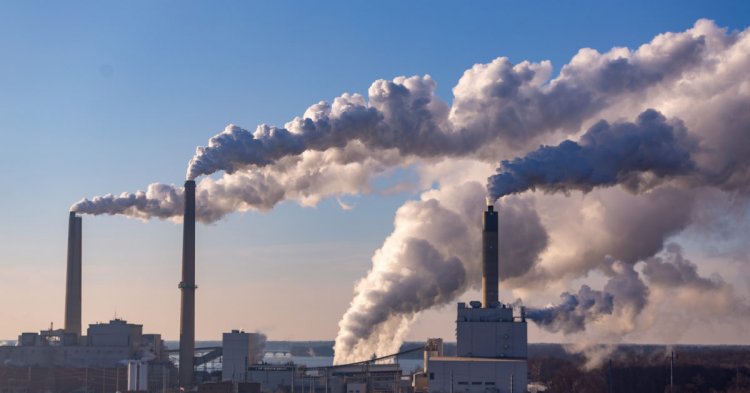National Pollution Control Day 2020 – and how is it different?

Days that we celebrate as awareness are a painful reminder of an incident or a tragedy that provoked the declaration of that day. National Pollution Control Day, which is observed on December 2, every year, is no exception. This day is observed remembering the innocent lives that were lost in the Bhopal gas tragedy.
A little about Bhopal Gas Tragedy
The Bhopal gas tragedy was a gas leak calamity that occurred on the night of December 2-3, 1984, at the Union Carbide India Limited (UCIL) pesticide plant in Bhopal, Madhya Pradesh, India. This accident led to the discharge of the toxic chemical gas Methyl Isocyanate and other toxic gases from the Plant in the city.
Over 500,000 people were exposed to these dangerous gases with zero protection as the toxic fumes made their way in and around the plant into the homes of surrounding residents. Of these, more than 2000 died immediately on exposure. The Bhopal Gas Tragedy is one of the biggest industrial pollution disasters in the history of India.
The government of Madhya Pradesh has confirmed that a total of 3787 people died due to the gas release in Bhopal.

Objectives to celebrate this day
The basic objectives of National Pollution Control Day are mainly two-fold and as stated below:
- It aims at raising awareness about the increasing air pollution and educating people about how to control and manage industrial disasters, and
- It is to make everyone aware of the significance of the pollution control acts and ways to prevent the industrial pollution that is a result of human negligence.
Air Pollution and India
Whereas this day is not about tackling issues related to only air pollution, but air pollution has a significant and direct impact on our day-to-day lives.
Air is a core element for the sustenance of life. The cleaner the air, the better your health and well-being. However, various sources, especially anthropogenic, are posing a significant threat to air quality.
Pollution is the greatest risk to human life, more so in India than in any other country. Air Quality Index (AQI) is a numerical scale used to measure and report the air quality of an area on a given day. The Central Pollution Control Board, a statutory organization under the Ministry of Environment and Forests, Government of India, is entrusted with the responsibility to provide air quality data and AQI at an hourly and daily basis of various stations across cities in India.
As per the data, it was observed that Ahmedabad, Delhi, Patna, Gurugram, and Lucknow have the highest AQI values on an average daily basis for the years 2015- 2019.
The city of Ahmedabad, in Gujarat state, is in the ‘severe’ category. The health impacts associated with such high levels of AQI are many. Even people with no prior respiratory problems are also vulnerable to respiratory disorders. People from the other four states including the National Capital of India, Delhi, have a higher incidence of respiratory disease than normal.
And this is just the tip of the iceberg.
Delhi – The most polluted city of the World
New Delhi, the capital city of India has been ranked as the world’s most polluted city in 2014 and 2016, respectively, by the World Health Organisation and the United States Environmental Protection Agency.
The State Government of Delhi, in the recent past years, has taken some stringent measures with passing some Odd-Even Regulations like a complete ban on coal-based power plants, suspending construction sites during peak pollution season, etc – to keep a check on air pollution and many more.
Regardless of these measures taken by the State Government, the AQI continues to be on the dangerous mark.

Does Air Pollution contribute to increasing Coronavirus cases?
The year 2020 has brought everything to a halt. The coronavirus pandemic started spreading like wildfire and many countries resorted to lockdown. A boon of the coronavirus situation, if any, is the positive impact it had on the environment because of the lockdown imposed to prevent the spread of the disease.
On March 25, 2020, the Government of India placed its population of more than 1.3 billion citizens under lockdown to curb the spread of the COVID-19. During the lockdown, the AQI levels stumbled drastically. The daily average AQI value for March- April 2019 is 656 and this value drastically reduced to more than half to 306 in March-April 2020.
However, as the country started running again, we were back to square one. To add to that are the researches which suggest that there is a direct relationship between the air-pollution and an increase in coronavirus cases in the country.
Pollution is a key aspect related to Coronavirus deaths, revealed the Indian Council of Medical Research (ICMR) DG Dr. Balram Bhargava. Dr. Bhargava said that studies conducted in Europe and the US have indicated that pollution has turned out to be a contributory factor in deaths due to Covid-19. He, however, said wearing masks would prove to be beneficial.
A Harvard University study shows that an increase of only one microgram per cubic meter in PM 2.5 - dangerous tiny pollutants in the air - is associated with an 8% increase in the Covid-19 death rate.
Another study by scientists at the UK's University of Cambridge also found a link between the severity of Covid-19 infection and long-term exposure to air pollutants, including nitrogen oxides and ground-level ozone from car exhaust fumes or burning of fossil fuels.
There have been no studies in India yet to examine the effect of air pollution on Covid-19 infection or recovery rates. But doctors and epidemiologists have long warned that toxic air will only hamper India's fight against the virus.
Pollution Control related laws in India
Pollution laws have become very important for industries. Disobedience of these pollution laws can lead to the closing of industry and criminal prosecution for management.
There are three main laws relating to pollution.
- The Air (Prevention and Control of Pollution) Act- 1981.
- The Water (Prevention and Control of Pollution) Act- 1974.
- The Environment (Protection) Act-1986.
Conclusion
The point of discussing various topics that are linked to pollution is to have an overall picture of the state of pollution in our country.
Days like these are just a plain reminder that we have a long way to go. And matters related to pollution are highly sensitive for the sustenance of human survival.
If not NOW then it will be NEVER, for us!















































